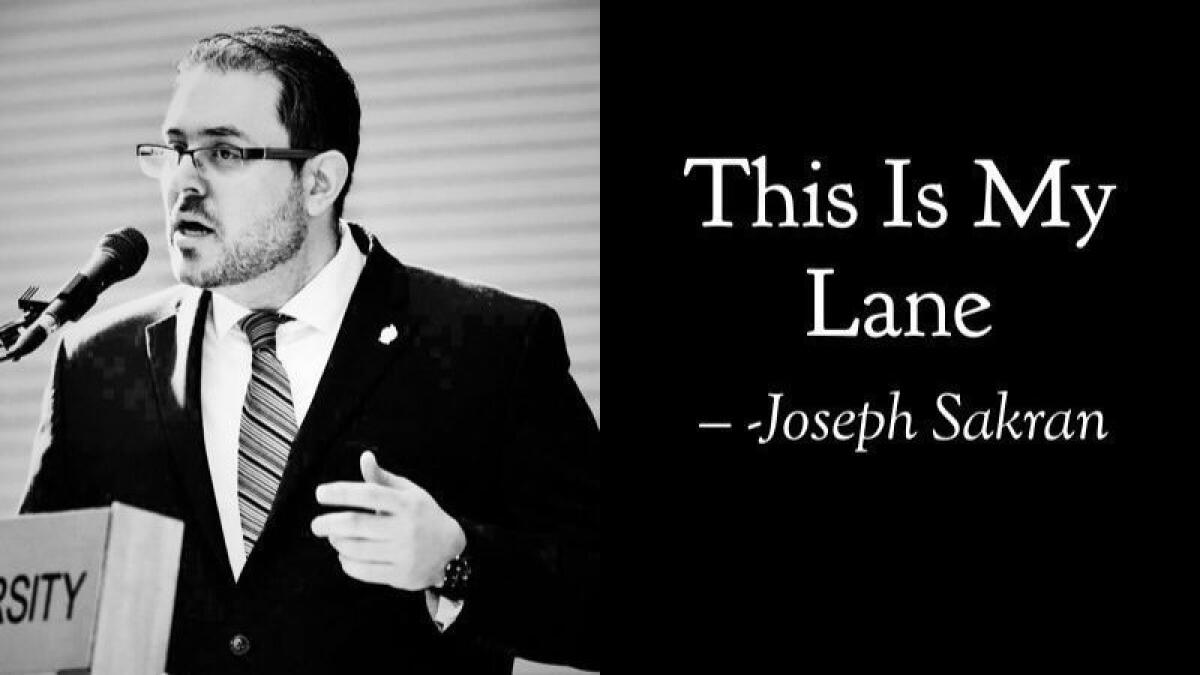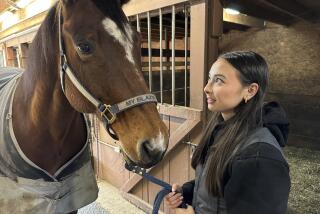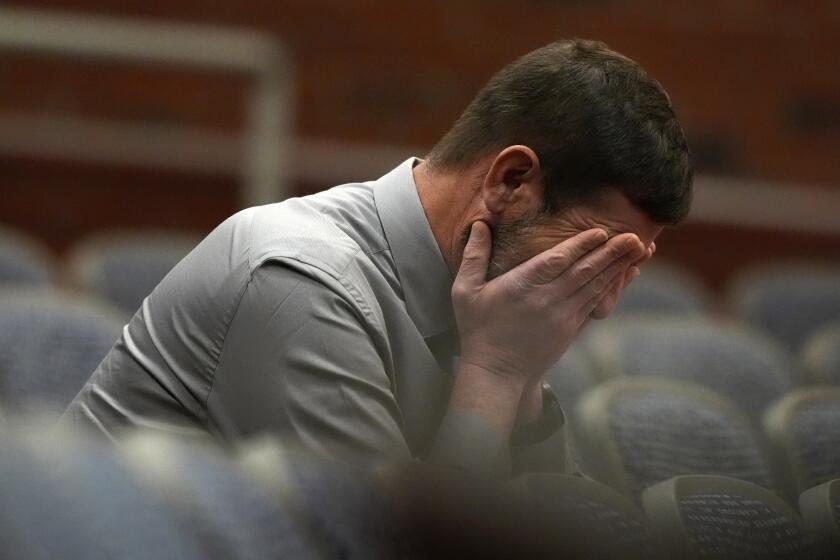Shot in the neck at 17, this trauma surgeon is now leading doctors against gun violence and the NRA

Joseph Sakran was standing on a playground when the bullet pierced his throat.
It was a Friday night in 1994 in Fairfax, Va., and Sakran was 17. The high school senior had started the night at a school football game and ended it nearly bleeding to death in the emergency room. The errant gunshot, fired into the crowd amid a fight between other teenagers, ruptured Sakran’s trachea, severed his carotid artery and paralyzed his vocal chord.
But Sakran was one of the lucky ones. The trauma surgeons at Inova Fairfax Hospital saved his life -- and his voice.
And now it’s louder than ever.
Two decades later, Sakran is now a trauma surgeon himself at Johns Hopkins Hospital in Baltimore and an unofficial leader within the medical community’s fight against gun violence, a movement that accelerated last week after the National Rifle Assn. told doctors to “stay in their lane” rather than “opine on firearm policy.”
Dozens of doctors responded with both graphic and intimate stories of gun violence in their operating rooms, each with the Twitter hashtag #ThisIsOurLane. For Sakran it couldn’t ring truer. He launched the page ThisIsOurLane on Twitter on Saturday, turning it into a window into doctors’ everyday experiences extracting bullets from bodies. In just a few days it racked up more than 10,000 followers.
“Having been shot in the throat, this has been an issue that has been near and dear to my heart for so many years,” Sakran said. “But once the NRA came out with that statement and really tried to undermine us and our role in gun violence and ending this public health crisis, that elevated the conversation to a different level. Thanks to the NRA, they actually united the medical community.”
Sakran knew he wanted to become a trauma surgeon almost as soon as he recovered from his own surgery. While doctors were still tearing scar tissue out of his windpipe, he successfully applied for college at George Mason University. He got his start in the business of saving lives while training as a medic and firefighter in Fairfax before he went on to graduate from Ben-Gurion University Medical School for International Health. As it happens, he completed his surgery residency at Inova Fairfax Hospital, where he had been treated.
He trained alongside the same surgeons who saved his life as a teenager.
“It was awe-inspiring to say the least,” Sakran said. “For me the most gratifying opportunity was to give someone else the same second chance that those surgeons gave me.”
Sakran’s activism in gun violence prevention began early in his career, when he started giving talks to students in underserved communities about his own brush with gun violence. It became particularly visible this year, however, in the wake of the mass shooting at Marjory Stoneman Douglas High School in Parkland, Fla., when Sakran founded “Docs Demand Action.”
The network of doctors has mobilized around urging lawmakers to more robustly fund gun violence research in the same way Congress has funded research into other public health crises, such as motor vehicle fatalities or deadly diseases. Congress has not substantially funded gun violence research since 1996, when it passed the Dickey Amendment. The measure didn’t necessarily ban gun violence research, but restricted research supporting “gun control,” resulting in a chilling effect on funds for gun violence research more broadly.
The amendment, backed by the NRA, came in response to concerns from gun rights groups that doctors would try to push anti-gun agendas - just as the NRA accused doctors of doing last week.
“People want to polarize this debate. But no one wants to take away the guns. That’s not what we’re saying,” Sakran said. “There’s not one solution to this. Part of it is developing the right data and the right research in order to understand what solutions we need to implement. We just don’t want to continue seeing these senseless tragedies come into our trauma centers day in and day out.”
The NRA lashed out at doctors last week after the American College of Physicians published a position paper that also called for greater research into the effectiveness of various gun restrictions and other risk factors for gun violence. It included support for universal background checks; counseling patients about safe, childproof storage of guns in the home; consideration of waiting periods before purchasing guns, to possibly reduce suicides; and, perhaps incensing the NRA the most, a ban on ownership of semiautomatic weapons.
“Someone should tell self-important anti-gun doctors to stay in their lane,” the NRA wrote in a tweet linking to commentary shredding the ACP’s paper. “Half of the articles in Annals of Internal Medicine are pushing for gun control.”
The #ThisIsOurLane responses from doctors invited the NRA into the hospitals, sharing photographs of blood on the floor, of blood on their scrubs, of the waiting room where surgeons must tell family members their loved one has died. The movement erupted the same night of the mass shooting in Thousand Oaks and in the days that followed.
But Sakran said part of the frustration for doctors is that the thousands of gunshot wound victims whom surgeons treat in their hospitals every year will never get the same attention.
The ones who die in his operating room become “chilled into my memory,” he said. Often he is the one who tells the families in the waiting room, and sometimes his scrubs are bloody so he has to change them first. The families are sometimes inconsolable but other times, Sakran said, they want to tell him about the person they lost.
Many of them are young, he said, reminding him of himself that night in 1994.
“Sometimes I think about what my own family must have felt when the surgeon walked out to talk to them,” he said.
Meagan Flynn is a reporter on the Washington Post
More to Read
Start your day right
Sign up for Essential California for news, features and recommendations from the L.A. Times and beyond in your inbox six days a week.
You may occasionally receive promotional content from the Los Angeles Times.






